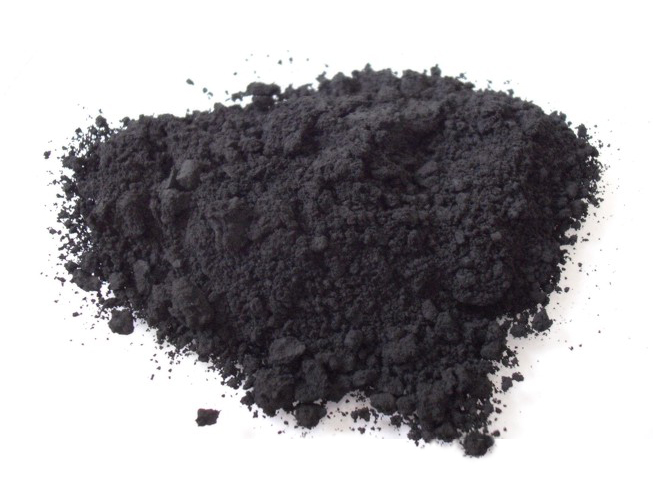Ancient paints were made from a variety of organic, inorganic, and synthetically produced materials. Below are the ones we used in our reconstructions. This is a sample of the range of pigments that were available to ancient artists; to learn more, visit the web exhibits Ancient Color and Pigments through the Ages.
Lead White
Lead white is a form of lead carbonate, which was made in antiquity by mixing lead with vinegar. The lead undergoes a chemical reaction, forming a crust of white lead carbonate that can be scraped off and ground into pigment. It was a very common white pigment despite its toxicity. First used by the Greeks, lead white remained in use through the 19th century.
Lead white has a slightly warm, reddish-yellow tone. It can be heated to produce lead red or lead yellow.
Grapeseed Black
Grapeseed black was made by burning grapeseeds and using the carbonized remains as pigment. Black pigments date back to prehistory. It was common and easy to produce by simply burning organic material. Other materials that could be burned for black pigment include wood and oil.
Egyptian Blue
Egyptian blue is a synthetic pigment, first made by the Egyptians as early as 3300 BCE. It is one of the most stable pigments in the ancient artist’s color palette and remains detectable today almost unchanged. Although it was once thought to be a rare pigment, new analysis techniques such as visible-induced infrared luminescence (VIL) reveal trace amounts on many objects where it was not visible to the naked eye (Dyer and Sotiropoulou 2017).
Ochre earths
The ochre earths are made from naturally occurring iron oxide deposits in the earth. They cover a wide range of colors, including red, yellow, and brown. Because they are made from a common substance, they were commonly used in antiquity, and they tend to be stable pigments.
Brown ochre, sometimes called umber or sienna, can range in shade depending on the mix of iron and manganese compounds. Red ochre derives its red color from naturally red iron oxide. It can also be produced by burning yellow ochre, which is made of limonite.
Madder Lake
Madder lake is an organic pigment made from madder roots. A lake is a type of pigment made by precipitating a dye with a mordant. The madder root would be steamed, dried, then crushed to produce pigment. Its color ranges from pink to red, and it is one of the most stable organic pigments that was in use during antiquity. UV-induced visible luminescence (UVL) is able to detect it on ancient surfaces.

Malachite
Malachite is found in many parts of the world in the upper oxidized zones of copper ore deposits. It is associated in nature with azurite, the native blue carbonate of copper, which contains less chemically bound water.

Vocabulary
- Underpainting – preliminary paint, sometimes in the form of outlines, under the surface paint layer
- Pigment – a water-insoluble coloring generally made from inorganic compounds
- Dye – a water-soluble coloring generally made from organic materials
- Color palette – a range of colors

